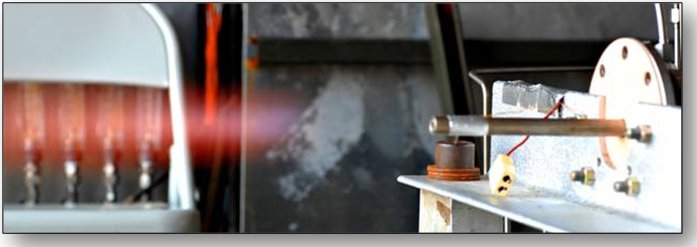A couple of articles back, I asked the following question:
“The whole orange-flame thing is not something I entirely understand…Any ideas from anyone else?”
I was talking about the flame stack during a night test at the NASA Stennis Space Center. It was a legitimate question. Combustion chemistry is really not my specialty. Lots of things are not my specialty. Try as I might, I’ve found that I can’t know everything about everything. Indeed, considering the many brilliant and knowledgeable people with whom I have the privilege of working here at NASA, I’ve come to accept the conclusion that there is a lot more stuff to know than can ever be learned. But that can never stop you from learning something new. And so I have with this.
In response to my blog question, we received a number of comments on the blog and those are posted. Thank you for your inputs and interest.
However, behind the scenes (so to speak), a coworker of mine, Robin Osborne, who does have experience with this kind of stuff read the blog and starting poking around amongst her notes and amongst her fellow experts in the field of flame spectroscopy. Below is a picture taken of igniter testing at MSFC using a gaseous hydrogen-oxygen mixture. Here too you can see a red-orange flame although it takes a distance for that colored portion to show itself.

According to Dr. Robert Pitz from Vanderbilt University, “Pure hydrogen (with no sodium) — air flames will glow red in a dark room due to the water vapor emission lines.” Both Dr. Joseph Wehrmeyer working in support of the Air Force and Richard Eskridge from NASA concur, noting that water vapor generates an orange-red-infrared continuum in such flames. However, all of these individuals also noted that there is a strong orange coloration in such flames due to sodium contamination within the hydrogen. The sodium is present as sodium hydride within the liquid hydrogen which decomposes at high temperatures to generate the vibrant color. The sodium contamination is a byproduct of how large, industrial quantities of hydrogen are made for uses such as, for example, flying the Space Shuttle. Dr. Christopher Dobbin of NASA noted that in the 1990 timeframe he was engaged in an analysis of the flame plumes ejecting from the Space Shuttle Main Engines (SSME). He said, “The (time) average sodium concentration we measured in the SSME exit plane was 0.091 parts per billion.” That doesn’t sound like much, and it’s not enough to impact engine performance or operation, but it’s still enough to measure based upon spectral analysis of the plume. Another possible contaminant, according to Richard Eskridge, is potassium and that can further contribute red emissions.
So, there you go. It’s a matter of water vapor at the right temperature and pressure (and therefore density) and a couple of key contaminants in the fuel. It’s “common knowledge” around here amongst us Datadogs that the plume of a Lox/Hydrogen rocket engine is clear. But that’s not entirely correct. It’s nearly clear. It still has the characteristic red-orange tint, but it’s at a density where the emission is too low to see. On the other hand, for the flame stacks at the test facility — the origin of this whole discussion — we’re talking combustion at atmospheric pressure so the water vapor products are denser as are the relative contamination levels since it’s a fuel-rich environment. And that’s why they show up at those brilliant colors in the nighttime pictures.
See, even old Datadogs can learn new tricks. Thank you to everyone who added their two cents, but especially to Robin Osborne for her inputs and insight.
